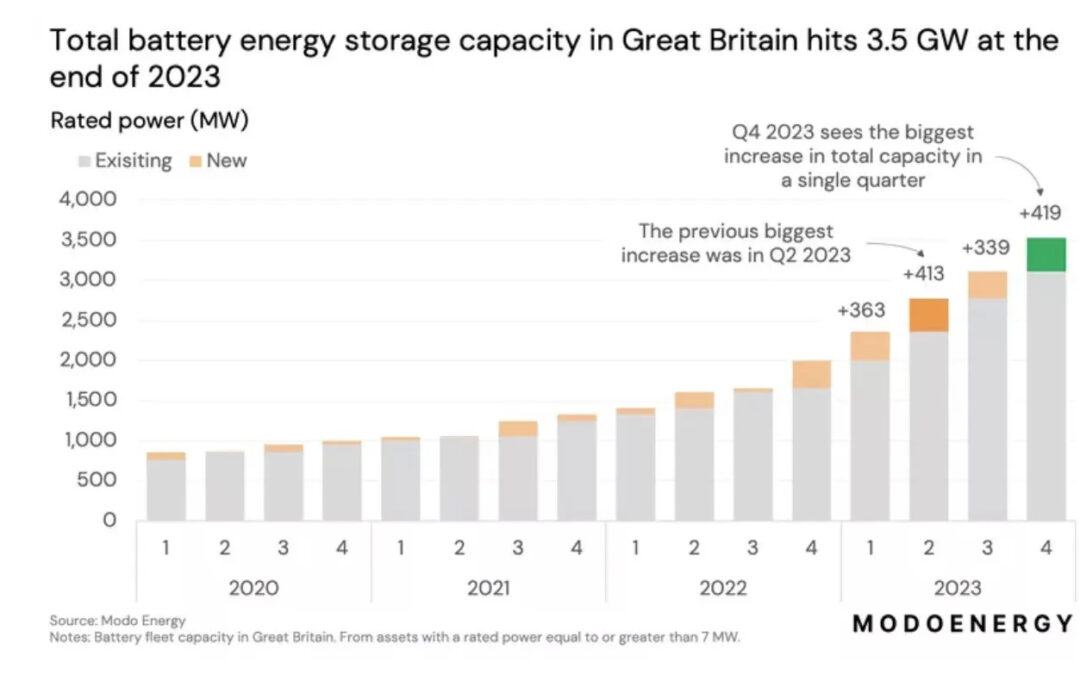


In a significant development for the renewable energy sector, the end of 2023 witnessed the largest quarterly surge in battery energy storage. According to Modo Energy (https://modoenergy.com), a renowned energy research consultancy, a staggering 420MW of new battery energy storage capacity became commercially operational during this period.
This remarkable achievement represents a remarkable 13% increase compared to the previous quarter (Q3), setting a new record for the highest quarterly surge in operating battery capacity in the UK. The previous record, set in Q2 2023, stood at 413MW (megawatts).
It is worth highlighting that this additional capacity has propelled the UK’s operational grid-scale battery energy storage capacity to an impressive 4.6GWh (Gigawatt hours). Modo Energy also confirmed that a record-breaking 1.5GW of battery storage was added throughout 2023, making it the most productive year in terms of capacity expansion.
During the quarter, eight new projects commenced commercial operation, including two substantial 99MW projects owned by Harmony Energy Income Trust and the Sosteneo Fund. Notably, Sosteneo’s Richborough Energy Park battery successfully connected to a local power substation in December 2023, following its acquisition from developer Pacific Green in July 2023, as reported by the Solar Power Portal.
Modo Energy’s Q4 statistics also revealed that six of the batteries, accounting for 64% of the new capacity, had a two-hour duration. This has consequently raised the average duration of battery storage in the UK to 1.3 hours.
Furthermore, 1.2GW of capacity in the pipeline was expected to be operational in Q4, with an additional 111MW delayed from previous quarters. However, based on historical buildout rates, Modo Energy projects that between 250 and 500MW of this capacity will actually become operational. The 420MW that did come online represents the upper end of this range, but there remains a backlog of solar projects yet to be completed.


 Q4 2023 Marks Record Increase in...
Q4 2023 Marks Record Increase in...


